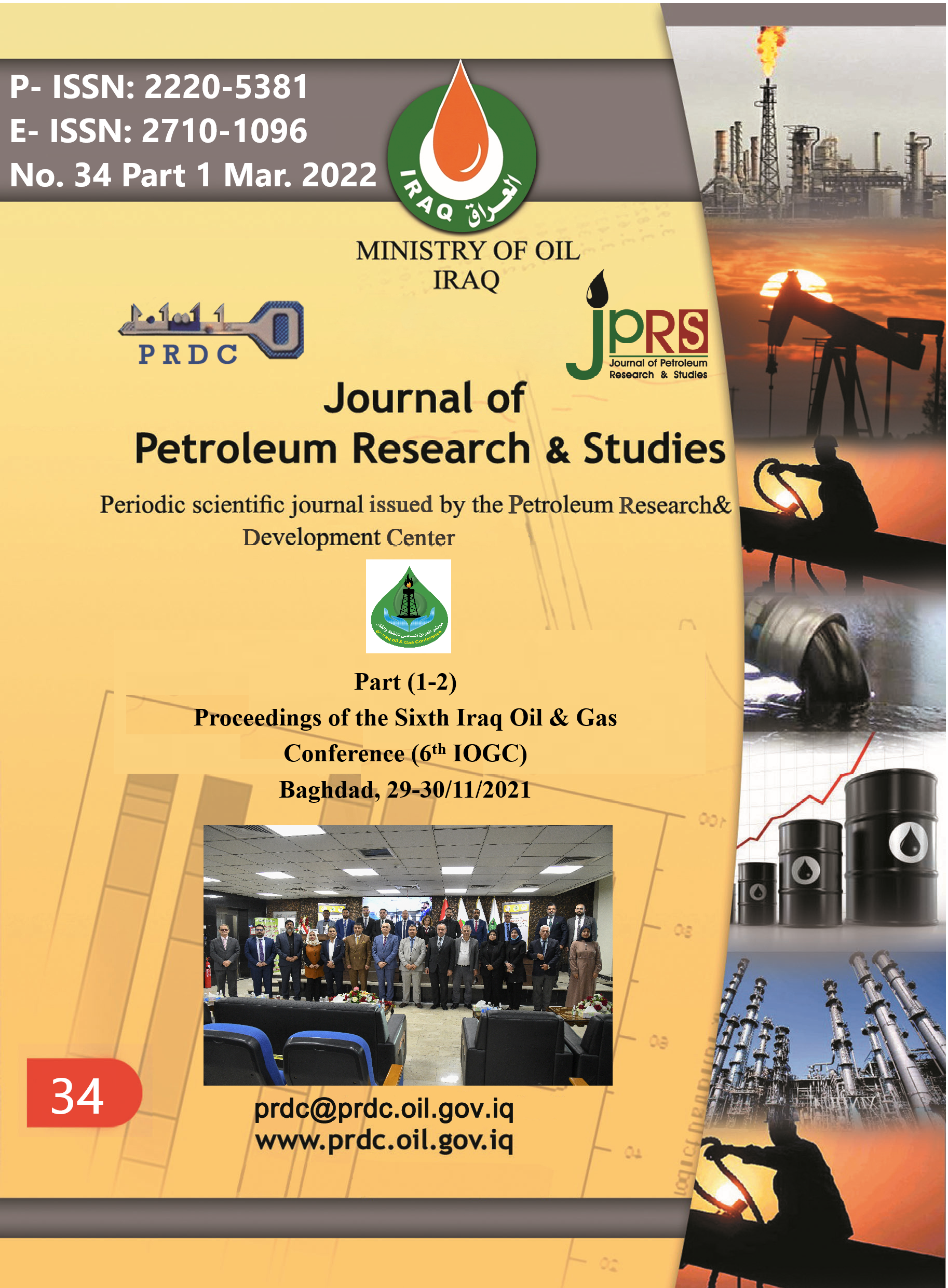Utilizing Nanotechnology to Solve Drilling Problems in Iraqi Oil Fields
DOI:
https://doi.org/10.52716/jprs.v12i1.587Keywords:
nano-materials, drilling mud, MWCNT, SiO2, nano-silica (rice husks)Abstract
Nanotechnology is a recent technology which is used in all industry sectors. In the oil and gas industry, this technology is commonly used due to its importance in solving the problems encountered while drilling operations and production stages. Nanotechnology can be used to improve the drilling process by adding nano-materials to drilling fluids in order to reduce drilling problems. This research is extended to previous research that published in journal of petroleum research and studies to compared the effect of nano-materials [Commercial nano-materials Multi Walled Carbone Nano Tube (MWCNT) and nano silicon oxide (SiO2) with nano-silica (rice husks, that prepared in PRDC labs) on water base drilling mud properties].
All characterization tests were achieved by the Nanotechnology and advanced materials researches center it is belongs to the University of Technology. The investigated properties of drilling mud included rheological properties and filtration. All tests are conducted according to API specifications (American Petroleum Institute).
The results show an improvement in the rheological properties (plastic viscosity, yield point, apparent viscosity and gel strength) and filtration after adding the commercial MWCNT, nano silicon dioxide(Sio2) and the prepared nano-silica (rice husks) to the water based mud. The results of plastic viscosity of MWCNT,Sio2 and nano silica(rice husks) are 12,20,8 cp after adding 0.7 gm to the water base mud while the amount of filter is 11.8 ml after adding nano particle size of MWCNT , nanoSio2 and 11.6 after adding nano silica(rice husks). The prepared nano silica (rice husks) gave results similar to the results of the commercial nano silicon dioxide (SiO2). Therefore, using of nano silica (rice husks) can be cost effective due to producing these materials locally instead of using the commercial nano SiO2.
References
References
Jamal Nasser, Anna Jesil1, Tariq Mohiuddin, Majid Al Ruqeshi, “Experimental Investigation of Drilling Fluid Performance as Nanoparticles”, World Journal of Nano Science and Engineering, pp 57-61, 2013, 3.
Abdul Razak Ismail, Norhana Mohamed Rashid and Nor Aziah Buang, “Effect of Nanomaterial on the Rheology of Drilling Fluids”, Journal of Applied Sciences, pp1192-1197- 2014.
Al-yasiri M., et al., "Enhancement of Drilling Fluid Rheology by Nanoparticles", annual transactions of the Nordic rheology society vol. 25, 2017.
Rogers, G, D., "Composition and properties of drilling fluids", Journal of Petroleum Research & Studies (JPRS), No.23 (6) pp. 94-95, 2019.
Mokhatab, S., M.A. Fresky and M.R. Islam., “Applications of nanotechnology in oil and gas”, E & P. j. petrol. technol., jpt 58: p 48-53 2006.
Kong, X. and M. Ohadi, “Applications of micro and nano technologies in the oil and gas industry“, Society of Petroleum Engineers (SPE), UAE November 1-4, 2010.
Das,Sudip. "A review on Carbon nano-tubes – A new era of nanotechnology", International Journal of Emerging Technology and Advanced Engineering, PP. 774–781, March 2013.
"Silicon Dioxide (SiO2) Nanoparticles – Properties & Applications Printable Document", AZoNano, Date Added: May 2013.
Keren, R., “Rheology of aqueous suspension of sodium/calcium montmorillonite”, Handbook of Soil Sciences Vol.52, pp. 924 – 928, 1988.
Dr. Hassan A. Abdul Hussien, Sarah Hakem Hamza, “A study of the performance of Nanomaterials on water base drilling fluid”, Journal of Petroleum Research & Studies (JPRS) No.23 (6) pp. 94-95, 2019.
Downloads
Published
How to Cite
Issue
Section
License
Copyright (c) 2022 Sarah Hakim Hamza, Nazik N. Mahmood, Sinan I. Mohammed, Shatha F. Khaleel

This work is licensed under a Creative Commons Attribution 4.0 International License.














